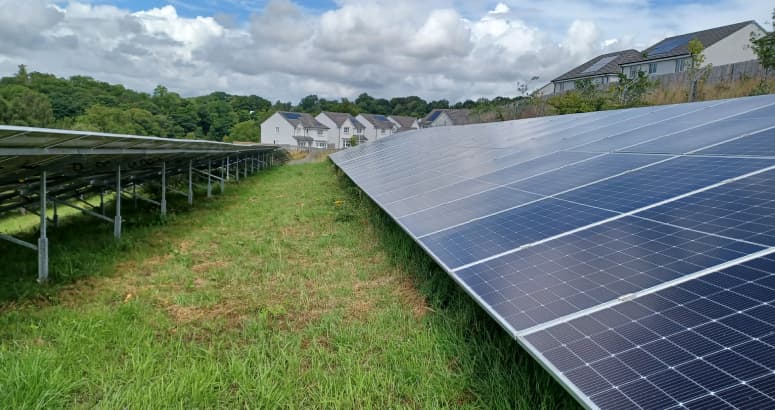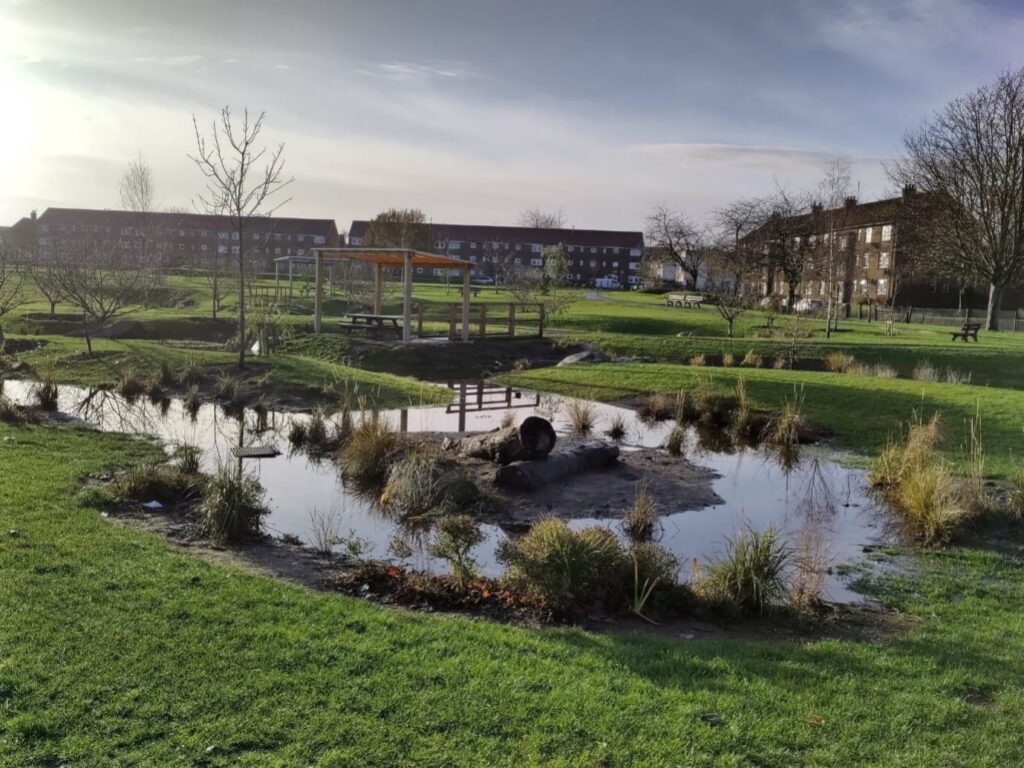
The projects have seen 512 photovoltaic (PV) panels installed at Bothwellbank Waste Water Treatment Works in South Lanarkshire, which are able to generate 0.23GWh of power and will offset around a fifth of the site’s energy needs.


More than 885 solar panels have been installed on two Scottish Water sites in the Central Belt, helping to save 57 tonnes of carbon a year and address the increasing urgency of climate change.

The projects have seen 512 photovoltaic (PV) panels installed at Bothwellbank Waste Water Treatment Works in South Lanarkshire, which are able to generate 0.23GWh of power and will offset around a fifth of the site’s energy needs.
Scottish Water has been a partner in a project, led by the local community and supported by the National Lottery’s Community Fund, to regenerate the site once occupied by Douglas Primary School as a multi-functional greenspace.
Our team worked with the community to incorporate sustainable drainage features in the new park, which store and slowly release the rainwater that falls on surrounding roads and rooftops during storms. This eases pressure on the combined sewer network in the local area, as well as helping to protect the local environment and reduce flood risk from the Dighty Burn. Importantly, the community has been able to realise its wider aims by creating an attractive outdoor space that also provides a home for wildlife; and can be enjoyed for play, relaxation, exercise, events and the growing of food.

Planning is now underway to introduce more sustainable water management measures in the area surrounding the park, with the aim of disconnecting over 40,000m2 of land area from the combined sewer network; and helping to enable the development of more social housing in Douglas. Engagement with the community, including schools and other key stakeholders, is being carried out to help shape the proposals.
Work with the community and Dundee City Council on sustainable drainage for Douglas has helped to inspire the Water Resilient Dundee partnership. This initiative is now pursuing opportunities for more sustainable management of stormwater across the city, reducing flood risk in communities, creating capacity for development and enhancing amenity.